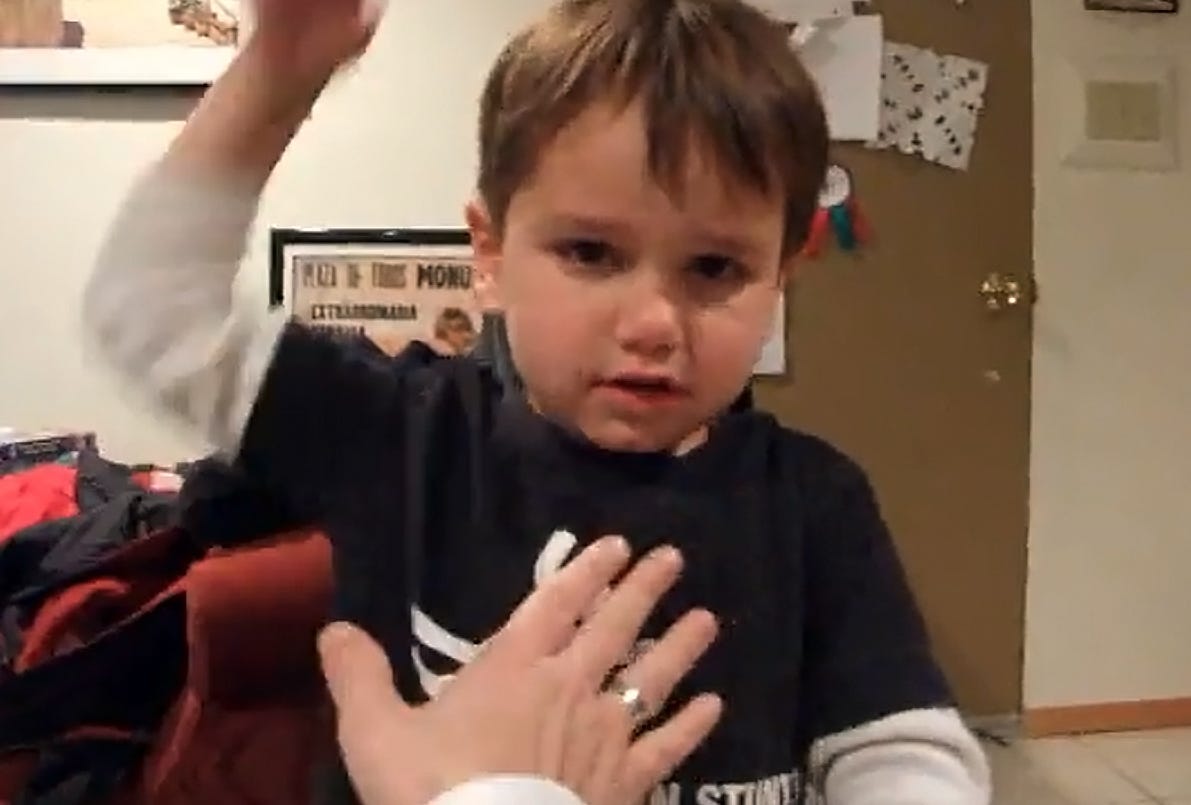Introduction: You’re Not Alone
Parenting a child with PDA (“Pathological Demand Avoidance” or the term I prefer, “Persistent Demand for Autonomy”) can feel confusing, exhausting, and isolating. Believe me, I get it. Although child psychologist Elizabeth Newson originally coined the term in the 1980s to describe kids with an atypical presentation of autism, I was completely unaware of the concept while I was raising my son, Seth (in the mid-2000s). The truth is, I didn’t even know for sure that Seth was autistic until he was 16!
From a young age, however, Seth was full of rage and physical aggression, and I was concerned he was on the road to becoming a bully. Because I had developed complex PTSD from being abused and bullied throughout my childhood and beyond, there were times I felt so triggered by Seth’s conduct, I doubted my ability to handle him, but there was one thing I was sure about. I was not going to raise a bully.
Unfortunately, discipline was tricky. Methods that seemed effective for most kids meant very little to Seth. Punishments didn’t deter him. Rewards didn’t motivate him. Time-outs led to massive meltdowns and ultimately had no impact on his behavior. Between my trauma history and Seth’s tendency to communicate frustration and discomfort through hitting, biting, scratching, and kicking, spanking him was out of the question. Hitting a child while telling him not to hit sends mixed messages, you know?
Fortunately, I had a friend who was raising a challenging child four years older than Seth. My friend gave me some invaluable advice I have never forgotten. He said:
“Never make empty threats. If you tell your son you are going to duct tape him to the chair if he doesn’t stay in his seat, and he doesn’t stay in his seat, you have to duct tape him to the chair. So, make sure to say what you mean and mean what you say. I learned that the hard way.”
I laughed but took his words to heart. Sadly, the situation I faced with Seth was… complicated. It felt like no matter what I did or said, Seth would double down on the behaviors I was trying to extinguish. He often responded to even the simplest requests with what outsiders perceived as a defiant attitude. Many of them (usually those who didn’t have children) assumed I was to blame. I would sometimes hear whispers. “She probably lets him get away with murder.” I didn’t. He tested me a lot, I’ll grant you, but once I set a boundary, I kept my resolve, even when he was working my last nerve. I will illustrate this claim later in the guide.
I did extensive research trying to determine what was happening with Seth, but I couldn’t find an explanation for his volatility in any of the books I read, websites I consulted, or conversations I had with other parents. So, I had to figure out how to reach him on my own. Through trial and error, I found ways to connect with Seth that fostered open communication and trust. As a result, today, Seth and I have an incredibly close relationship, and he is comfortable in his own skin – most of the time.
I am so grateful to have the opportunity to share Instructions Not Included with teachers, therapists, parents who are still in the trenches, and even PDA’ers themselves. Full disclosure: I am also autistic with PDA, (with a side of ADHD and dyspraxia, a form of SPD, or sensory processing disorder. The neurospicy apple doesn’t fall far from the tree!)
The most important thing to remember is that PDA is nobody’s fault – not yours, not the PDA’er’s. Just like “garden variety” autism, PDA is a neurological, biologically based difference. This guide will help you understand PDA and provide tools and insights that will help you work with, rather than against, a PDA’er’s needs. In these pages, I will present both annotated scientific research and personal anecdotes (which I have placed in gray text boxes you can skip if you’re in a hurry). I hope you find this information helpful and, at times, even entertaining!
________
So, what do you think? Do you want to hear more? I’m still in the early stages, but I wanted to share a sneak peek. If you are interested in reading more right now, my memoir, Mending Together, Building Together can be found on Amazon - in print, on Kindle, and on Audible!





